Aquariums with luminescent fish flapping their tiny fins and blowing even tinier bubbles is a lovely sight. But do you want to take your fish tank game to the next level?
Create a planted aquarium! Planted aquariums are beautiful underwater gardens with aquatic plants at their core.
They replicate the natural world, showcasing coral reefs, freshwater jungles, tropical oceans, swamps, riverbeds, and more, all within a glass tank.
You can accent them with fish, sand and gravel, driftwood, and lights to create unique landscapes.
Creating a planted aquarium will give you a chance to let your creative juices flow. And it’s a great way to introduce some greenery to your indoors.
There are many different styles of planted tanks you can experiment with. “Go Dutch” if you’re looking for something easy, or try the iwagumi style for a bit of Zen.
Follow our step-by-step guide to nail the process. And don’t forget to avoid the common planted aquarium mistakes we’ll talk about in this article.
Ready to create your own planted aquarium? Read on to learn all about it!
What Is a Planted Aquarium?
Simple, plants + aquarium. But you have had plants in your aquarium before, so what’s so special about a planted aquarium?
Well, a planted aquarium is more of a little aquatic garden than a fish tank. It mimics the natural environment and houses living plants arranged in stunning displays.
It is generally unfiltered and unheated. Plus, it requires less work than a conventional aquarium. Maintaining one is also not a task as most planted aquariums don’t have fish in them.
But of course, planted aquariums have their unique set of requirements. You will have to grow specially selected aquatic plants.
These plants will need a nutrient-rich substrate and regular fertilizing. And let’s not forget about the pruning and trimming bit. The result, however, will be a beautiful display of green art in your living room.
And if you take good care of your planted aquarium, it will thrive, catch everyone’s eye, and make your chest swell with pride.
Planted Aquarium Types and Styles
Making an aquatic landscape, or aquascaping, is an underwater art. It involves creatively arranging your plants, sand and gravel, rocks, and other decor items.
But before you start making one, know the different ways you can go about it. Some, like the Dutch-style aquariums, are great for newbies.
Others, like the Japanese or nature-style aquariums, may require a bit more expertise.
Whichever style you go with, planting an aquarium is always a fun and exciting project, one you can enjoy with family and friends.
You can also get more creative and build natural scenes such as mountains, jungles, deserts, and waterfalls inside your tank.
Take a look at these different styles of planted aquariums to get inspired.
Dutch Aquascaping
Dutch-style aquariums are lush and plant-heavy. They are inspired by the plant arrangement culture in the Netherlands, hence the name.
To nail this style, create a colorful aquatic garden using plants of different shapes, leaf sizes, textures, and hues. You can also create terraces and rows for more depth.
The floor of the Dutch tank looks like a green carpet. And you will not find ornaments like wood or rocks in them.
Tip: Dutch-style aquariums require a lot of space. Make sure you go for a large tank while creating one.
Iwagumi Aquascaping
Iwagumi, or Japanese-style aquarium, is one of the most popular aquascaping styles. The term “iwagumi” means “rock formation”.
An odd number of rocks are used to create the main visual focus in this style. You can couple them with some low-growing, carpeting plants.
Simplicity is at the heart of this style. When done right, it looks almost like an underwater mountainside with the plants representing trees along a hilltop.
Because of their soothing look, iwagumi aquariums also create a Zen garden atmosphere. Place them in your home or office to let the stress of a long day melt away.
Jungle Aquascaping
Jungle-style aquascapes are possibly the easiest to replicate. They depict a dense, chaotic, and untamed ecosystem. So you can forget about your pruners and scissors.
To get the style right, grow lush and varied species of aquatic plants in your tank. Couple them with rocks, stones, and driftwood to create a wild look.
Tip: Allow the plants to grow naturally without trimming them all too often.
The best part about a jungle-style aquarium is that you have the freedom of choice when designing your scene. Only, make sure you balance out the light levels while planting your aquarium.
Nature Aquascaping
Nature aquariums not only mimic, but also capture the spirit of natural landscapes. Plants and fish are the key players in this style.
Because they are raw and asymmetrical, nature-style aquariums look more like a creation of nature.
You can create hills, mountains, islands, riverbeds, and valleys in your aquarium. The plants and hardscape are arranged to look as natural as possible.
This is a very flexible aquascaping style. You can play with different arrangements of stones, mosses, logs, sand, and other natural elements to create a peaceful and harmonic ecosystem.
Biotope Aquascaping
Biotope or biome is the most natural aquascaping style. It is designed to replicate actual natural habitats.
That means, to set up a biotope aquarium, you can combine only those fish, plants, and hardscaping elements that occur naturally together.
To get the style right, start with some research. Find complementary flora and fauna species that require the same water conditions, temperature, and even hardscape.
Biotopes are not meant to necessarily please the human eye. Instead, they are meant to be appreciated by their inhabitants. Even so, you have plenty of creative ways to go about them.
Idea: Create replicas of the New Guinea River, Southern African swamps, Amazon streams, Thai forest creaks, etc. for your biotope aquarium.
Saltwater Aquascaping
Saltwater aquariums are rocky and beautiful to look at. But they are also the most expensive. That’s because you will need the right species of fish, corals, and live rocks to set one up.
Saltwater aquariums are also a little more demanding when it comes to maintenance. You will have to regularly check the temperature and salinity of the water.
Lighting plays an important role, too. It helps support the life of coral invertebrates in the aquarium.
But the results are totally worth all the hard work. Imagine beautiful ocean reefs with corals, invertebrates, and eye-catching fish species in your tank. Who wouldn’t want to create one?
Taiwanese Aquascaping
Although no longer as popular, the Taiwanese aquascaping style can create a rich sense of life as it uses a lot of plant life, illusions of depth, and high terraces.
But the most important feature of this style is the use of figurines. This adds the element of “life” by creating a more realistic scene.
Walstad Aquascaping
This is the most low-maintenance and low-budget aquascaping style out there. You will only need to create an ecosystem where the flora and fauna balance each other’s needs.
You can also use this approach for mini aquascaping.
Use potting soil with no added chemicals to grow your plants. Keep only a few fish to minimize waste accumulation. Give your aquarium time to find the perfect harmony and thrive. And your Walstad-style aquarium is ready.
The aim is to do away with filtration and water changes. Once done, you can enjoy the sight of your beautiful aquarium. But don’t forget your job to feed the fish and top off the tank.
How to Create a Planted Aquarium
Time to set up your own planted aquarium! It’s more than just throwing in a bucket of water, some plants, sand, and accessories in your tank.
A planted aquarium needs to be set up right to thrive. But don’t worry. Creating one is not as difficult as it may sound.
And the result of all your blood, sweat, and tears will be like a raw piece of nature in your tank.
Follow this easy step-by-step guide and you will be on your way to making a stunning planted aquarium.
Step 1 – Choose the Aquarium Tank Style
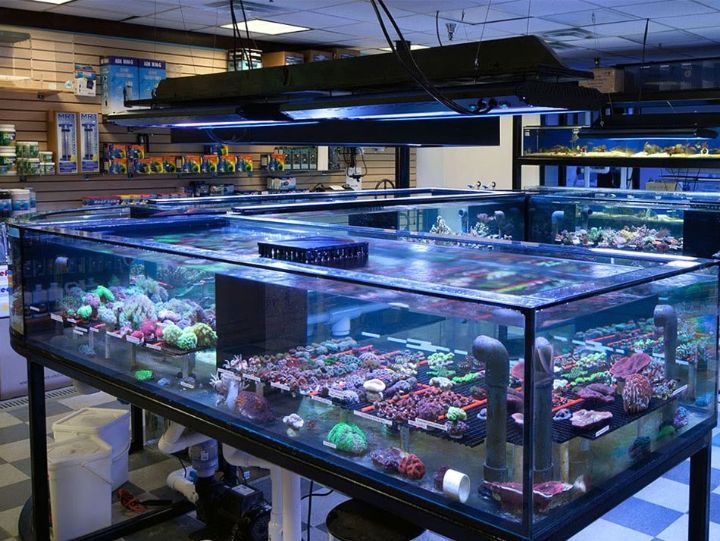
The first step is to choose the aquascaping style that fits your space and style. If this is your first aquarium, start with something easy and appealing like Dutch style.
Else, you can try the more sophisticated (and difficult) iwagumi or biotope styles.
A bit of research goes a long way. So, make notes on which flora and fauna you want to keep and what are their specific requirements.
Also make sure the style you have chosen is compatible with them.
Step 2 – Get the Aquarium Size Right
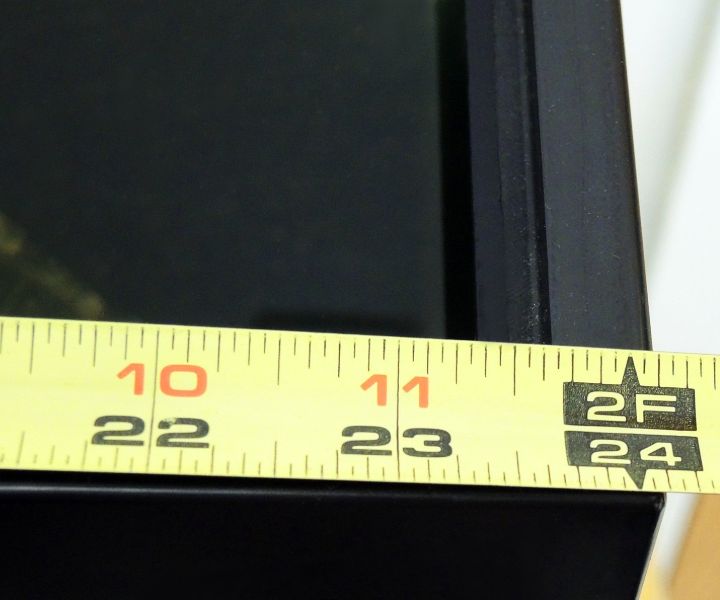
Once you have picked a style, you should have an idea of the size of tank you will need to make your dream aquarium.
Steer clear of small tanks. You think they are easy to maintain, but they can look as messy as a teen’s bedroom.
Tip: If you are a beginner, go for a 15 to 20 gallon tank. That should be big enough to hold your underwater garden and small enough to maintain it easily.
Step 3 – Prepare the Aquarium
Time to clean the aquarium. Whether you have bought a new tank or are revamping an old one, it will need some thorough cleaning.
Clean the surface using a soft cloth and vinegar. Avoid using chemicals and detergents as they can harm your plants.
Step 4 – Add Planted Aquarium Substrate and Soil
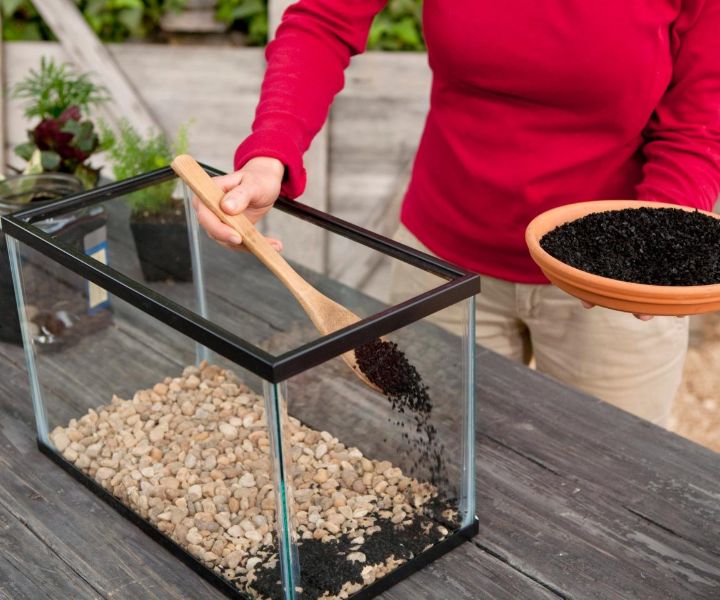
Your plants will need nutrients to survive. Now that your aquarium is clean and shiny, you can start adding the substrate layers. They will also create a base for the plant roots to hold on to.
But you need to be very careful—if done wrong, your substrate can cloud up the entire tank.
Planted Aquarium Sand
Use coarse sand and fine gravel as your foreground substrate. They will create a natural look in the front of your layout. Plus, they will contrast well with the green plants and make your aquarium look visually appealing.
Sand and gravel are relatively inert. That means they will not provide nutrients to your plants. You will therefore need to add a nutrient-rich substrate underneath it.
Planted Aquarium Soil and Substrate
Live plants do well in active substrates like Fluorite, EcoComplete, Aquasoil, and Akadama.
You can find these at your local pet store or look for them online.
But before you pour the substrates into your tank, rinse them until the water runs clear. Otherwise, your tank will turn very cloudy.
Tip: Lay only a thin layer of substrate at the front of the tank, and slowly increase it as you move towards the back. Top it off with small-sized gravel to keep the substrate from mixing with water.
Planted Aquarium Rocks
Don’t just toss rocks in a random manner. Carefully design the layout. Create a natural scenery with the rocks or place them asymmetrically in an iwagumi aquascape.
Tip: For natural landscapes, don’t mix and match your rocks. In nature, only one type of rock will be seen in a particular location.
Planted Aquarium Background
Backgrounds can add a bit more character to your planted aquarium. You can opt for a 3D stone or wood-like background. They stick easily to glass and look quite realistic.
Alternatively, you can opt for picture backgrounds or matte films.
Setting a background is optional—you can always leave your tank with 360° degrees visibility.
Step 5 – Add Nutrients and Fertilizers
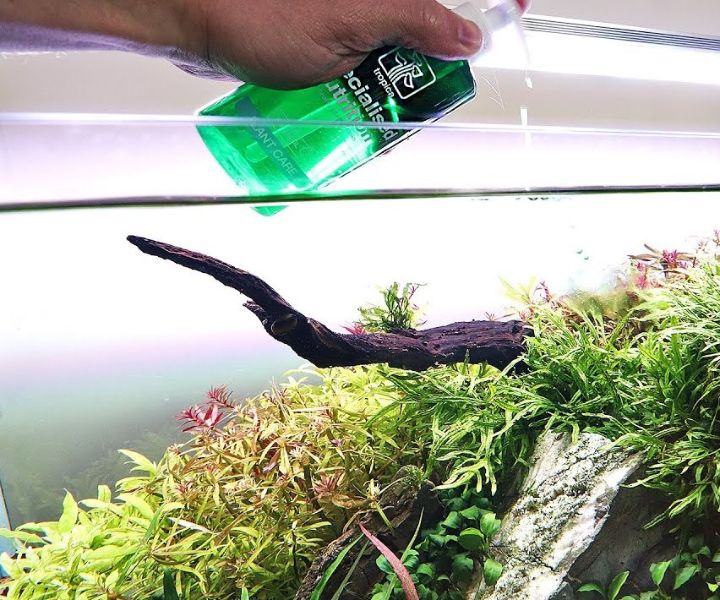
Aquatic plants need the right nutrients in order to thrive. While they can gather some from the substrate, you may have to fertilize them now and then.
But don’t fertilize too much, as that might promote algae growth. It’s best to look for signs like slowed growth, discolored leaves, etc. before fertilizing.
Step 6 – Add the Right Plants for Planted Aquariums
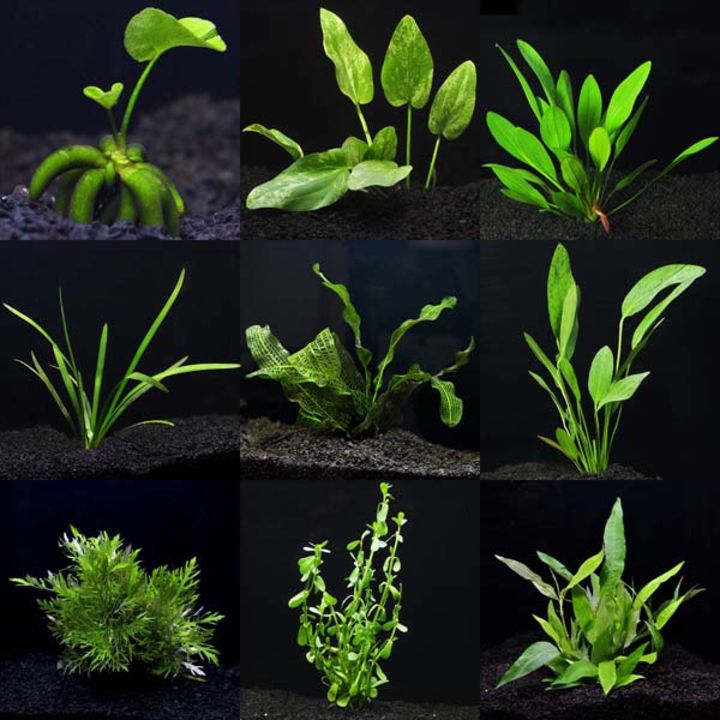
A planted aquarium is a living piece of art. And to create your unique artwork, you will need the right aquarium plants.
Start with short plants like dwarf anubias, mosses, or baby tears in the foreground.
Then keep adding showy plants like Amazon swords, large anubias, tiger lilies, stem plant, and vallisneria in ascending order to fill the midground and background.
Idea: Draw a sketch of what you want the finished aquarium to look like before planting. It will save you the time and effort beginners generally waste on rearrangement.
Step 7 – Accent with Fish
Fish are an accent in planted aquariums, so you can skip this step if you like. If not, choose the fish species that complement the overall feel of the tank.
Remember, plants are the real stars of your tank. So don’t overwhelm your tank with fish.
Tip: Make sure you allow your planted tank to establish for at least a couple of weeks before adding fish.
Step 8 – Add Lighting and Décor
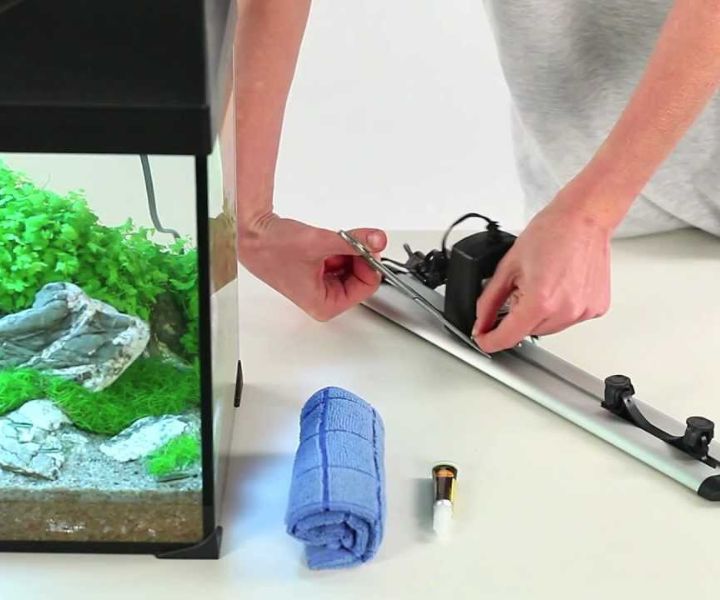
Proper lighting is key to a successful planted aquarium. You can opt for LEDs or halogen bulbs. Depending on the type of aquarium, your plants will need low, medium, or intense light.
Planted Aquarium Décor
To decorate your planted aquarium, you can use driftwood, synthetic corals, rocks, figurines, etc.
But don’t overdo the decor, since planted aquariums are better when left natural.
Step 9 – Maintain Your Planted Aquarium the Right Way
Your planted aquarium will take some time to find the right balance. In the meantime, spend some time on its upkeep.
Clean your tank weekly, change its water, dose nutrients faithfully, and don’t make drastic changes to the system. Also, do not leave your tank in direct sunlight as that can promote algae growth.
Tip: Make sure you place your planted aquarium away from drafty windows and heating/cooling vents.
Planted Aquarium Mistakes to Avoid
Setting up a planted aquarium can be quite confusing, especially for beginners.
You have followed all the steps correctly, chosen the right aquatic plants, fertilized on time, and even cleaned the tank regularly.
But your aquarium still doesn’t look like it ought to? Don’t frown or give up that easily. Maybe you’re committing one of the following mistakes?
1. Not Changing the Water Regularly
Even if you have only plants in your aquarium, you can’t just set it up and forget about it.
You will have to constantly change the water, especially if your aquarium is new. It will also help get rid of algae problems.
Tip: As a general rule, you should do a 30% water change each week.
2. Not Planting Heavily During Setup
Another common beginner mistake is being miserly while planting the aquarium. Yes, your plants will grow with time and fill the entire tank. But in the meanwhile, algae will start forming and taking over.
To avoid that from happening, make sure you heavily plant your new tank. A good approach is to leave just a centimeter or so in between each plant.
3. Using Too Much Substrate
It’s rightly said, too much of anything is bad. While a good quality, mineral-rich substrate is necessary, too much of it can affect the water chemistry.
Plus, a thick layer of substrate will make your tank look like it has been created by an amateur hand. You don’t want that for your aquarium, do you?
Tip: Place a thin layer of substrate at the front of your tank, rising in height as it moves back.
4. Fertilizing Too Much
Your plants will need some fertilizers from time to time. But overfeeding your plants will come at a cost: algae outbreaks.
So, how much fertilizer to use? You can decide to add some if the leaves of your plants start turning yellow. Otherwise, don’t.
5. Keeping Too Many Fish
A few fish in your planted aquarium is no harm. Rather, they will add to its charm. But overstocking your aquarium is a big no-no.
Too many fish spoil the broth. Quite literally. They will affect the filtration system and allow waste to accumulate.
Tip: As a rule of thumb, add up to 3 fish at a time to your planted aquarium.
6. Placing Rocks and Driftwood Without Boiling Them
Boiling your rocks and wood is important. It helps kill algal or fungal spores that can ruin your aquarium and all the handwork you had put in.
So, place the rocks and driftwood in a kettle with boiling water. An hour or two should be enough to sanitize them.
6. Not Pruning Enough
Planted aquariums are generally densely packed. You will have to prune your plants regularly to give them space to breathe and get enough light.
Regular pruning will also help the plant thrive and look bushy. Only, make sure you do not overdo it. Also, aim for a natural look while pruning.
Good to know: The process of grooming plants is also very therapeutic. Go ahead then, give your plants a good trim.
7. Using a Small Aquarium
A large aquarium certainly demands more maintenance. But it is a big mistake to buy a small aquarium to escape the upkeep bit.
That’s because the smaller the tank, the less water it will hold. Which means that the water conditions like temperature, pH, hardness, etc. can change incredibly quickly.
Your plants will not be able to adapt to quick changes and may die. Ideally, you should go for a 20 gallons tank.
Planted Aquarium Frequently Asked Questions
Planted aquariums can be a bit difficult to start if you’re a hobbyist or beginner aquarist. To make the process smoother, you may want to go through answers to some of the most frequently asked questions.
Are planted aquariums hard to maintain?
Planted aquariums are honestly a breeze to maintain. They are easier to take care of than traditional fish aquariums.
You’ll only need to spend a little time each week on their upkeep and to avoid common planted aquarium mistakes.
Check the water temperature and pH, clean the glass cover, scrape off algae, change the water, check the CO₂ cylinder, groom the plants, and you’re good.
Which plant is best for aquarium?
There is no one best plant for a planted aquarium. But if you’re a planted aquarium newbie, go for an easy-to-care-for plant like hornwort. It is hardy, fast-growing, and looks dense.
Other plants to consider for your aquarium include moneywort, duckweed, water wisteria, Amazon sword, Christmas moss, java fern, and Vallisneria.
In the end, the plants you choose depend on the planted aquarium type and style you prefer.
What do I need for a planted aquarium?
In order to set up a planted aquarium, you will need a tank, aquarium plants, filtration system, plant substrate, Carbon Dioxide supplements, and a heater.
You can add LED lighting and accessories like driftwood and rocks if you like. Fish are also optional in a planted aquarium but can make for a lovely addition.
Check our planted aquarium guide for more ideas.
Planted Aquariums and Patience
A small underwater garden thriving in your living room is too lovely an idea to pass. It will help you bring a piece of nature into your home. But remember, it will not thrive the very moment you plant it.
Be patient with your tank. Give it time to grow and become the piece of art it’s meant to. Observe the tiny leaflets become bigger, the stems longer. Appreciate their imperfections that the Buddhist monks understand only too well.
While your planted aquarium teaches you patience, give it all the care you can. It will eventually find the right balance and go on auto-pilot.
We’re curious to find out which planted aquarium style you liked the best. Also, let us know if you’ve started making your own already.
You can use the comment section below to ask your doubts. We’ll be happy to help.
Happy aquascaping!

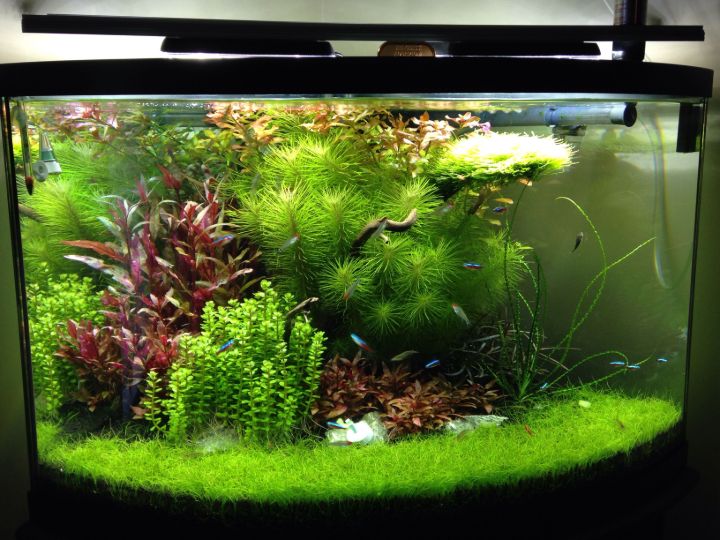
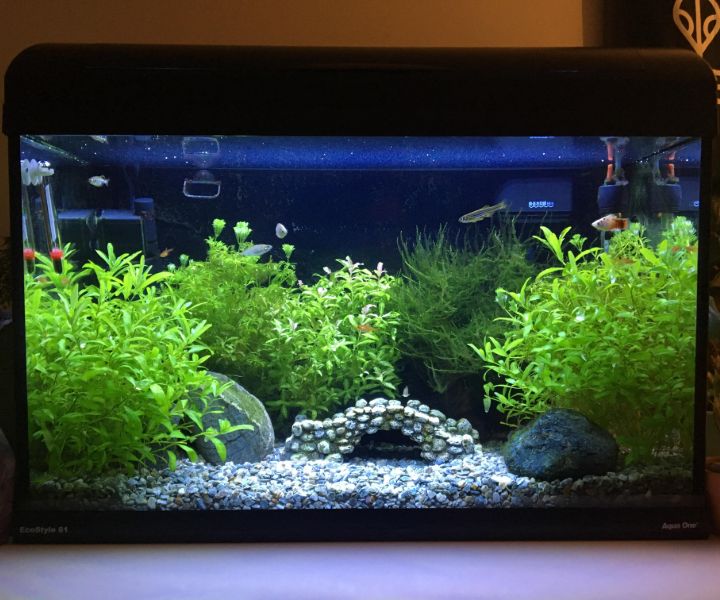
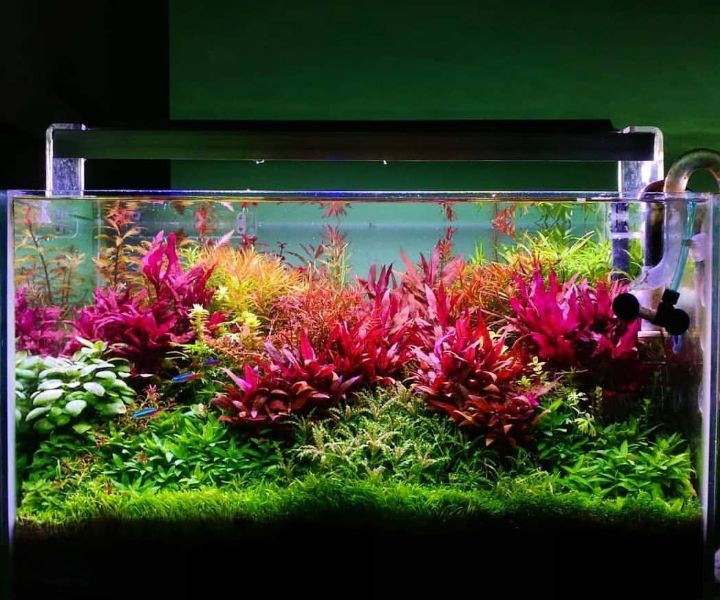
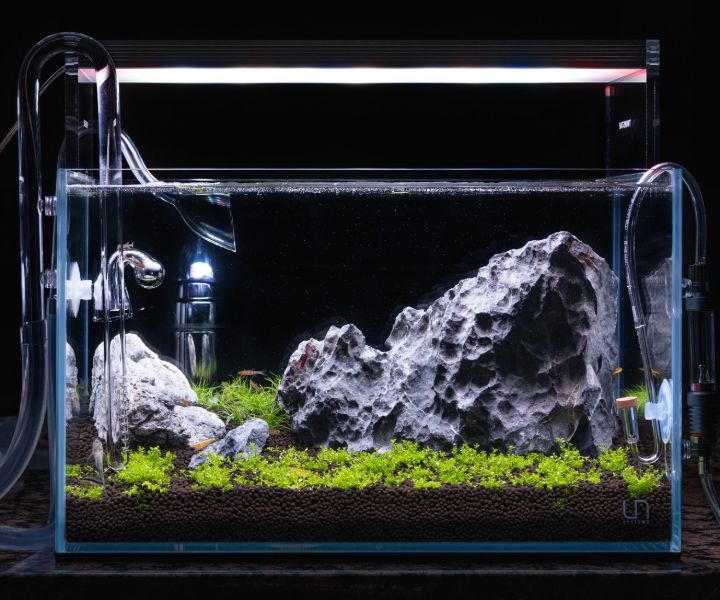
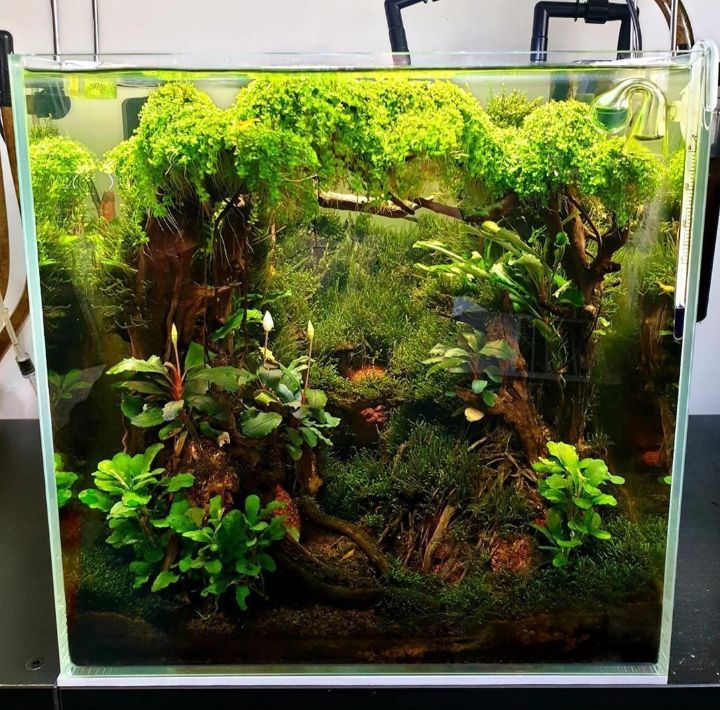
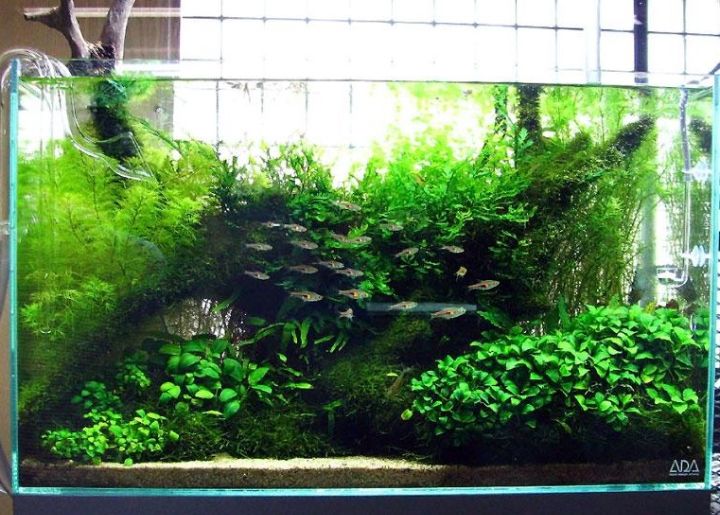
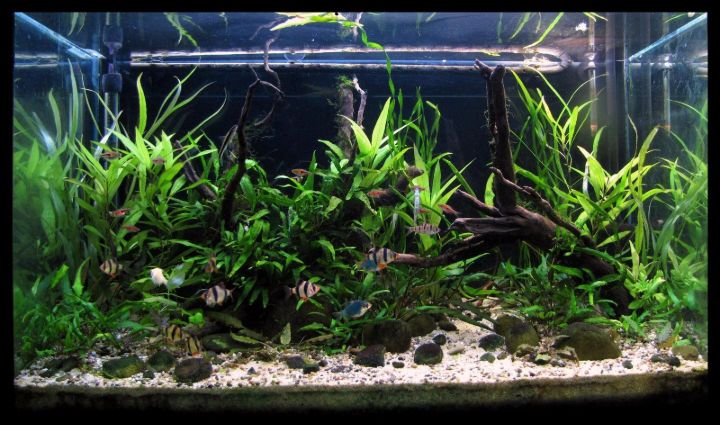
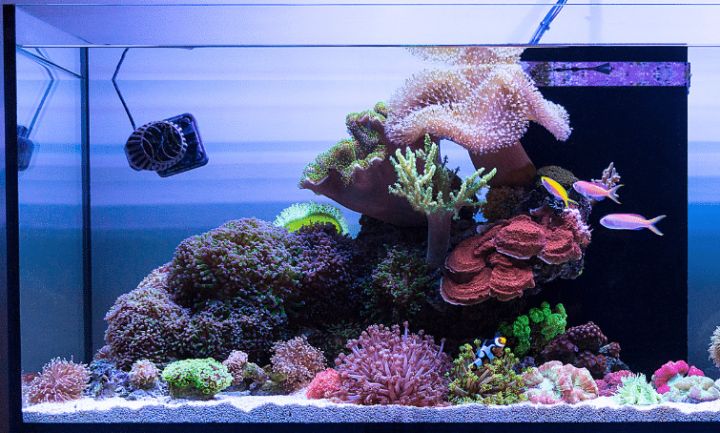
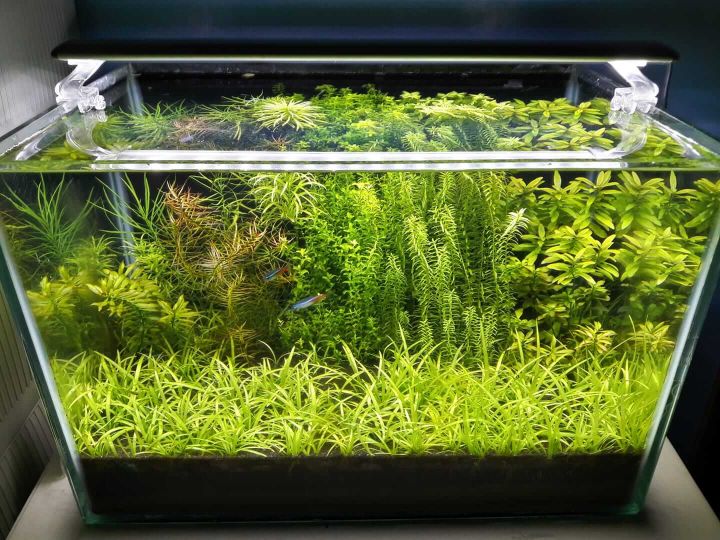
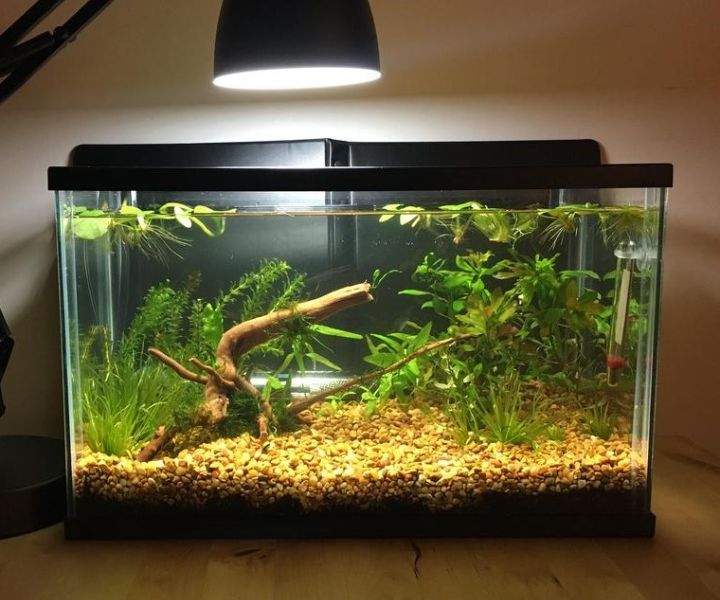
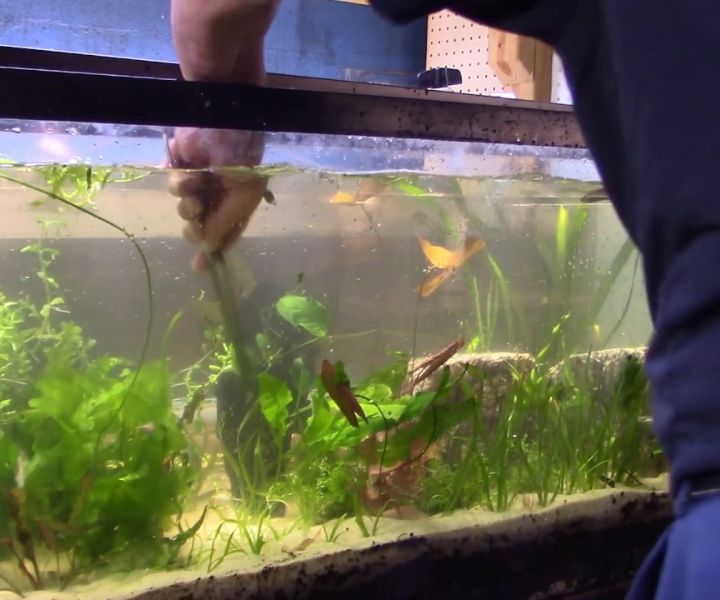
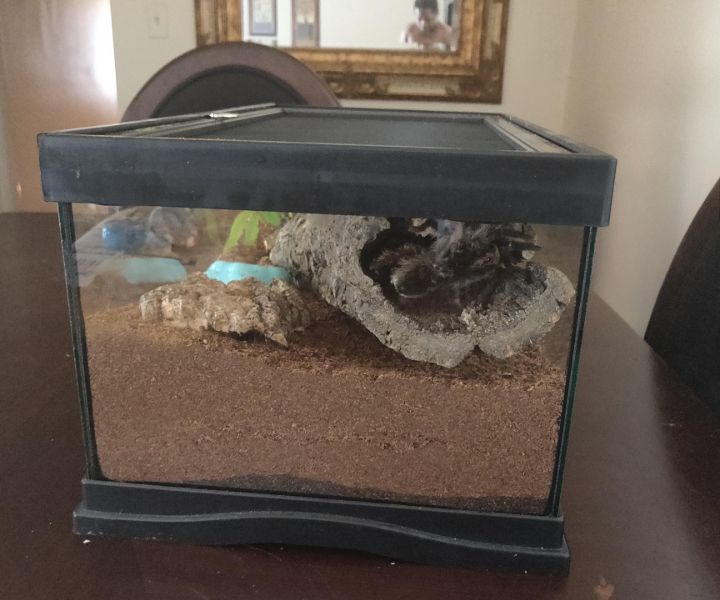
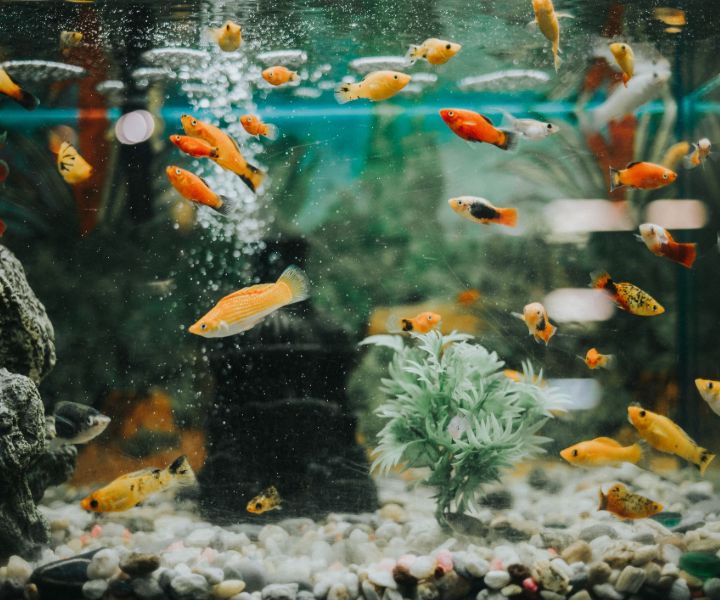
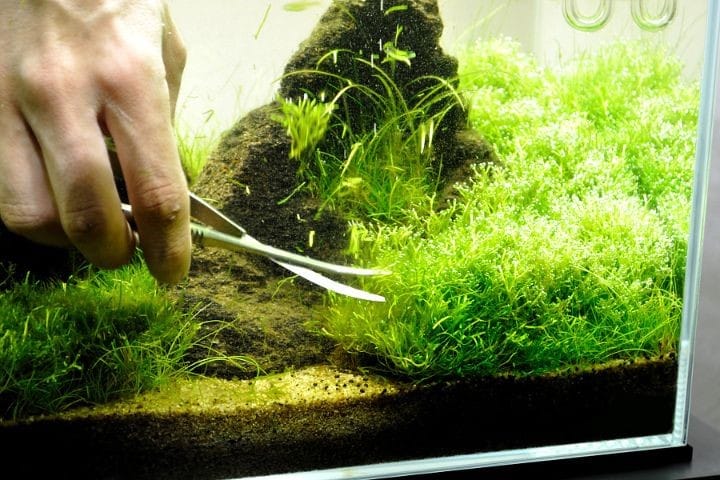
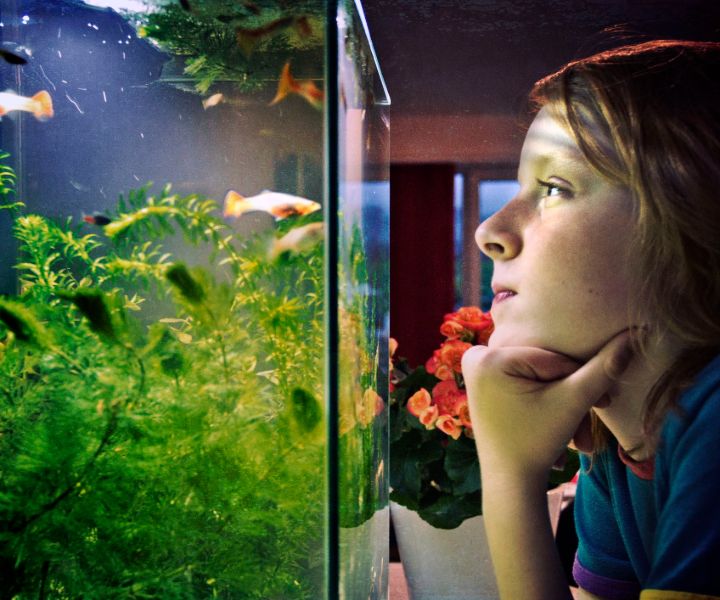
Leave a Reply